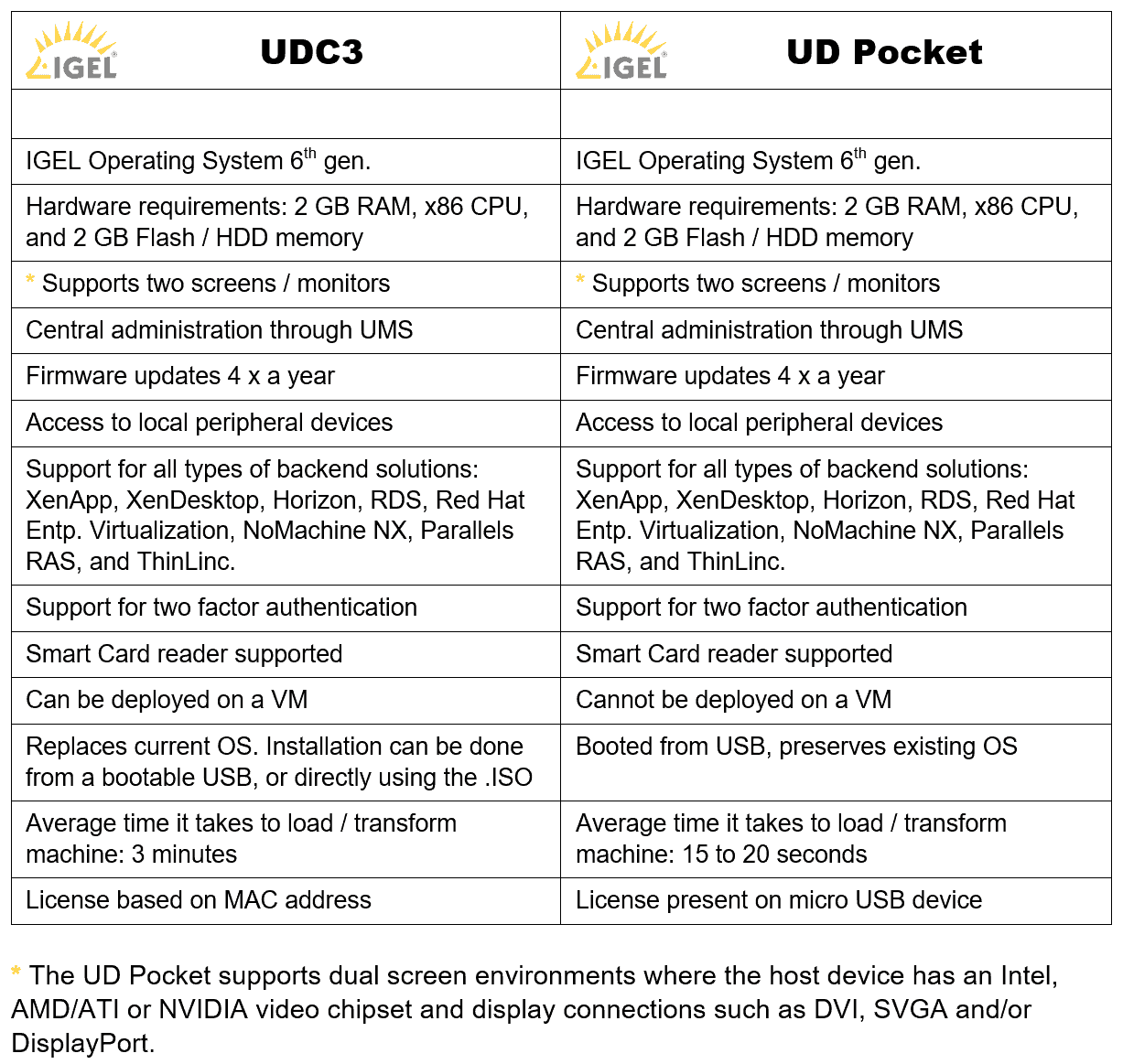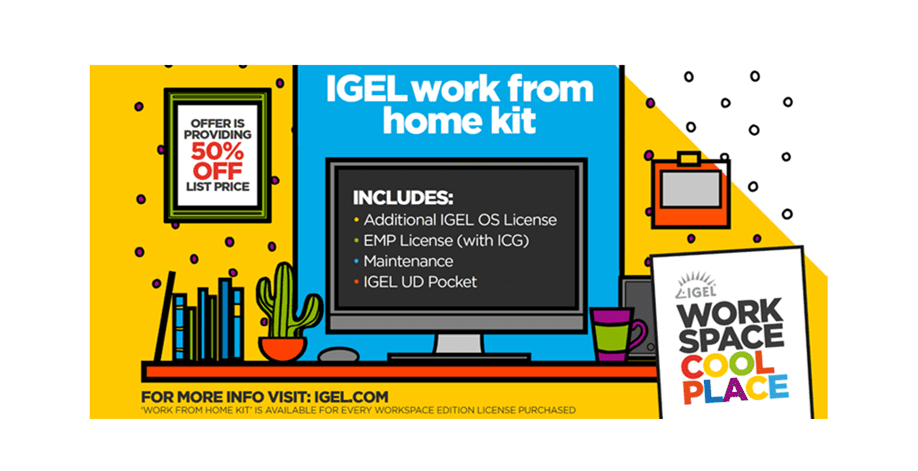IGEL Blog

Convert all your machines into (permanent or temporary) fully functional, fully managed endpoint devices, in under three minutes!
The following is a guest blog post from Bas van Kaam and originally appeared on http://www.basvankaam.com.
If it sounds to good to be true, it usually is. Well, not in this case. The IGEL UDC3 software, which stands for Universal Desktop Converter, transforms any x86 based machine into a fully functional and managed endpoint device, and does it fast.
Last year I reviewed the IGEL UD Pocket – have a look here– another piece of cleaver software that turns your desktop or laptop into a endpoint, on the go, without affecting the underlying Operating System or data stored on it.
Today I’ll include the UDC3 and compare the two. While both solutions achieve similar results, the way the UDC goes about it is somewhat different and most of all, more permanent.
The UDC use case
To repurpose existing older hardware into endpoints. As mentioned, the UDC3 will convert (almost) any x86 device, regardless of its manufacturer and/or operating system (Mac’s and existing endpoint devices included) as long as it adheres to the minimum requirements of a 64 bit X86 compatible processor, 2 GB RAM, 2 GB flash-/HDD-memory, and USB boot supoort – identical to that of the UD Pocket.
Basically, we’re talking about all PC’s and laptops build within the last 6 years, give or take. The Endpoint conversion software takes only minutes (around two to three, depending on the CPU) to turn your old (er) devices into a universally deployable IGEL Linux-based Endpoint. By the way, when in doubt, they offerfree licenses to test compliancy.
UD Pocket vs. UDC3
Since these two ‘look alike’ and tend to cause some confusion every once and a while, here’s a brief comparison.
The UD Pocket is a (very) small hardened, dual-boot USB device. It transforms your workstation, laptop (Mac included), etc. into a thin clien, literally within seconds. It ships with the IGEL Universal Management Suite (UMS) from where all IGEL devices, physical endpoints included can be remotely configured, managed and partly monitored.
After sliding the UD Pocket into one of your USB ports, and configuring your machine to boot from USB, you’re good to go. The UD Pocket boots the IGEL Universal Desktop Linux Operating System.
However, it will not make any changes to the operating system already installed on the hard disk, SSD or flash storage – the UD Pocket runs entirely from the USB stick. Though, interaction with underlying storage and such is configurable as well. After selecting it from my (PC) boot menu, it was ready for use within 15 to 20 seconds.
The UDC3 works a bit differently. The UDC3 software (referred to as firmware) fully replaces the existing Windows or Linux Operating System – it will be permanently removed from disk, something to keep in mind. It basically ‘hides’ the physical hdd/sdd from an end-user perspective making it very hard, or near t impossible to temper with – very secure. Other than that, from a functionality point of viewthere isn’t much of a difference.
IGEL Fact: It is possible to install the UDC3 software onto a bootable USB stick. Only to be used if the target system’s OS needs to stay intact no matter what.
UDC3 vs UP Pocket comparison cheat sheet

Management
Every IGEL endpoint, whether hardware (UD2, 3, 6, 7, and 9) or software based (UD Pocket and UDC3), automatically includes the Universal Management Suite, UMS. In the end, all devices run the same IGEL endpoint OS – currently in its 6thgeneration.
I did some testing and went through the UMS management console. It looks very clean and configuration is as straightforward as you might expect, while still offering a ton of options/features to play with – there isn’t much you can’t do.
Also, what most people don’t know about IGEL and their software, UMS in particular, is that they offer a bunch of (UMS) add-ons. These allow you to centrally manage even more types of machines, like Windows 7 and 10 based devices, for example, but also enable you to do things lie remote management outside of the corporate network through something called the IGEL cloud gateway – might be an interesting subject for an upcoming article.
Concluding
The UD Pocket is an excellent solution for remote and mobile workers (contractors) providing on-demand access to VDI environments and other published resources without too much hassle, though it might fit a ton of other use cases as well, of course.
Both the UD Pocket as well as the UDC3 leverage existing hardware. Where the Pocket will temporarily transform any type of x86 device into a full managed endpoint, the UDC3 will completely convert it making it very easy to give older desktops, laptops, tablets, or endpoint devices even, a second chance at life – ROI anyone?
Most people I talk to about IGEL, still associates them with being a endpoint company, and I guess that’s only fair given their history. Just know that they are about much more than ‘just’ that. Nowadays it’s all about the bits and bytes. In fact, according to IGEL, they are a software company more than anything else, I agree.


